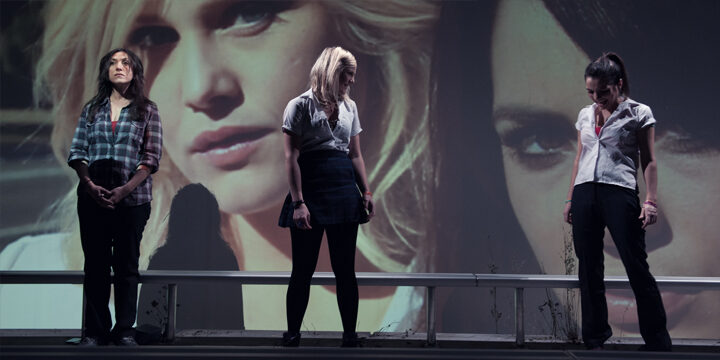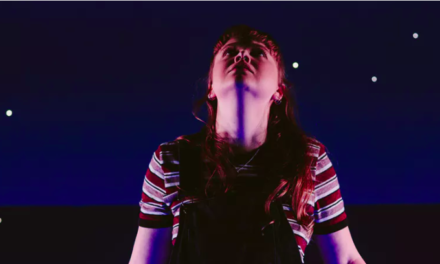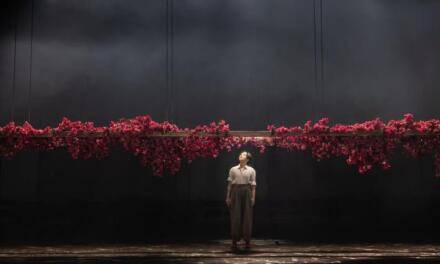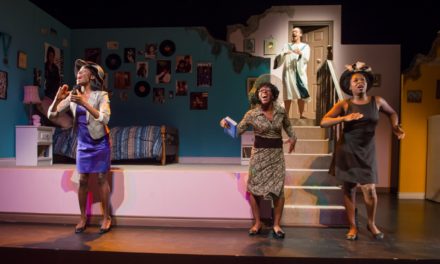Australian playwright and Fulbright scholar, Lachlan Philpott, writes about the socio-cultural cause and effect of theatre programming in Australian theatre companies. This content was written exclusively for TheTheatreTimes.
September is spring in Australia. Little lambs are born in outback paddocks, and in the cities, it is the theatre-programming season. With dramatic cork-popping and dizzying-flourish, the major theatre companies are unveiling their shiny new seasons for the entire year to follow.
It is telling time. Those few weeks of spring announcements of what and who is in and out are public. The trends, fashions, aesthetic priorities, and the collective imagination of industry are on show.
After the announcement comes analysis. How many new plays? How many of those new plays are Australian? How many of those Australian plays are by women? How many by men? How many reflect the diversity of our evolving culture? How many plays are written by emerging writers? Established writers? Are we seeing any plays except those by Shakespeare that are not new?
Perhaps the questions give away as much as the answers.
I thought sharing this moment in the year might give a snap-shot to someone caught up in the trends and passing fashions of their own ecosystem. Analysis of an upcoming year can tell a lot about the state of the theatre sector.
For brief context: Sydney and Melbourne are Australia’s largest cities. Like many places, they are bursting with theatre performance. Both cities have strong professional theatre scenes, but when compared to cities their size in say, European countries, they are small and the range of aesthetics limited. It is difficult for most theatre artists who are not employed in theatre companies to sustain a living from this industry, though many artists work on theatre ‘independently’- or, without a union standard payment to support their living.
Silent Disco at Griffin Theatre Company
The fact that theatre companies announce their seasons so far in advance is expected here now. Much of the Australian theatre scene is a subscription market, meaning that theatre companies select and program work based on their subscriber tastes hoping to sell their entire seasons as early as possible, in a kind of crowdfunding to get money coming in. From my experiences, programming in larger theatre markets outside Australia do not happen as far ahead and can, therefore, be a bit more flexible, allowing artistic directors to be more responsive to concerns in the wider world, given everything isn’t locked-in nearly two years in advance.
What is exciting about theatre programming in Sydney or Melbourne is that there is a tradition of juxtaposing Australian work with work from other cultures, so that they are in conversation. Such programming can be difficult since local artists depend on productions of their work to make a living, and there are never enough stage slots to go around.
There has been significant debate over the last few years about the amount of Australian content on stages here. What is exciting right now is that this debate has led to positive change. Australian playwrights, for example, have been at the core of the debate about the balance between Western classics, new international works, and a range of Australian plays. For some time it was claimed that local audiences avoided new Australian plays, or that they preferred to see work that was from elsewhere. Evidence of this was really difficult to find. Audiences anywhere enjoy engagement in quality theatre from their own culture, and Australia is no different.
Australian writers have gained recognition for their ability to tell stories and boldly experiment with ideas and form. They have something important to contribute, and there has been a gradual increase in the amount of new Australian work being produced both in Australia and abroad. With so many exciting Australian playwrights and so few slots for production, however, programming remains contentious and political.
The most encouraging element in the reveal of 2015’s programming so far is that the amount of plays being programmed written by female writers has increased. Across the period from 2001-2011, only 25% of major performing arts productions had a female director (though individual years varied dramatically), and for writers, the figure was 21%.
In 2012, only 11% of works staged by main stage Australian companies were by women. This devastating figure resulted in wide action by a range of artists and organizations; in 2015, it appears that we are very close to gender parity. This is a really exciting achievement, and one can only hope it becomes the standard in years to come.
Programming for 2015 reflects other trends and concerns as well. One is that the cycle of “adaptamania” is losing momentum. A clever adaptation or response to a new work can be illuminating, but for a significant time, Australian auteur directors have been abusing that potential. They have been stealing the titles, plots, and characters from classics to bring audiences in, but many productions have been undercooked failures. The spate of adaptions set behind glass and quoting passé Berlin theatre tricks seems to be slowing, at least for now.
Looking at curatorial programming choices by Australian theatre leaders also uncovers a preference for programming stars over the content. There are no programs that are thematically or politically driven. No artistic director has said this will be a year of work by women, or this will be a year of work that shows up the short-sighted greed and lack of compassion of our recently elected government. It seems that few curatorial decisions relate the content of any individual work to another – surprising given the astonishing political climate we now live in.
Truck Stop at Seymour Centre
What is clear is a kind of quirky obsession with the new. Everyone seems to want to program new things – new plays, new voices or new takes on the old. So far there is not one new play programmed that has been written by an established writer. There are also very few second productions of work and in a place where we only envy the often talked about U.S. practice of rolling premiers. In Australia the life of most new local plays is relegated to a premier, and frequently that’s it, even if the work is successful, and that it’s obvious that for any play to remain in the collective cultural conscience it must be brought to life at different times by different teams in front of different audiences.
For a country that is gaining an embarrassing international reputation for racism, there is still a long way to go in acknowledging our past and finding ways of representing our evolving multicultural identities, but that is something that is being hotly debated. And it’s about time. The debate is vigorous and one of the advantages of a small theatre scene is that these conversations can amount to action that brings about change quite quickly. So it’s about communication, which seems so obvious.
With more Australian work being staged than ever, and a sense that change can take place, it is a pretty exciting spring for theatre-makers, especially the young. And who dare tell the lambs in spring what fate the later seasons bring? Instead, the next step for us is to address representing our evolving culture more accurately and to find a means to balance sharing the work of established and emerging artists, so that we can also celebrate the bodies of work from artists who have had long and inspiring careers.
Lachlan Philpott is a Sydney-based dog person. As a playwright he has collaborated with artists in companies which include Amnesty International, Australian Theatre for Young People, Bell Shakespeare, Checkpoint Theatre Singapore, Crowded Fire Theater San Francisco, Griffin Theatre Company Sydney, Iron Bark London, Kansas State University, Kenyatta University Nairobi, La Boite Brisbane, The Lark New York, The Mac Belfast, Melbourne Festival, MKA New Writing Theatre, Playwriting Australia, Q Theatre Penrith, The Playwright’s Centre Minneapolis, The Playwright’s Foundation San Francisco, Rock Surfers Sydney, Sydney Theatre Company, TheatreofplucK Belfast, The Traverse Theatre Edinburgh and Tantrum Theatre Newcastle. Lachlan is Chair of the Australian Writer’s Guild Playwrights’ Committee. As the inaugural Australian Professional Playwright Fulbright Scholar, he will travel to work in the USA in late 2014.
This post was written by the author in their personal capacity.The opinions expressed in this article are the author’s own and do not reflect the view of The Theatre Times, their staff or collaborators.
This post was written by The Theatre Times.
The views expressed here belong to the author and do not necessarily reflect our views and opinions.


















